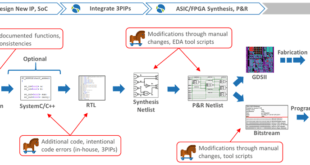In the digital age, encryption safeguards much of the world’s sensitive data, ensuring privacy and security across communications, financial systems, and critical infrastructure. However, the emergence of quantum computing introduces a formidable challenge to these protections, making “harvest now, decrypt later” (HNDL) attacks a growing concern.
What Are “Harvest Now, Decrypt Later” Attacks?
HNDL attacks occur when malicious actors intercept and store encrypted data with the intent to decrypt it in the future. While today’s encryption algorithms make decryption infeasible with classical computers, the rapid progress in quantum computing poses a significant risk. Quantum computers, leveraging their superior processing capabilities, could potentially break traditional encryption protocols, exposing once-secure data.
Quantum Computing and the Decryption Threat
Traditional encryption relies on mathematical problems that are computationally infeasible to solve with current technology. For example, RSA and ECC (Elliptic Curve Cryptography) depend on problems like integer factorization and discrete logarithms. Quantum computers, however, with algorithms like Shor’s Algorithm, could solve these problems exponentially faster than classical systems, rendering many of today’s encryption methods obsolete.
Protection Measures Against HNDL Attacks
To counteract the threat posed by quantum computing and mitigate the risks of HNDL attacks, organizations must adopt forward-looking strategies. These include:
1. Transitioning to Quantum-Resistant Cryptography
Quantum-resistant cryptographic algorithms, also known as post-quantum cryptography (PQC), are designed to withstand attacks from both classical and quantum computers. NIST (National Institute of Standards and Technology) is spearheading efforts to standardize these algorithms, which include lattice-based, hash-based, and code-based cryptographic methods.
2. Implementing Quantum Key Distribution (QKD)
QKD leverages quantum mechanics to secure communication channels. It enables the exchange of cryptographic keys using quantum bits (qubits), ensuring that any attempt to intercept the key is detectable. This makes QKD an effective defense against interception in HNDL scenarios.
3. Upgrading Encryption Protocols
Organizations must identify and replace vulnerable encryption protocols, such as RSA and ECC, with quantum-safe alternatives. A comprehensive inventory of encrypted data and communication systems is critical to ensure a seamless upgrade.
4. Employing Data Minimization and Lifecycle Management
Reducing the volume of sensitive data stored and ensuring timely deletion can limit the impact of harvested data. Proper lifecycle management ensures that obsolete data is no longer accessible to attackers.
5. Strengthening Data Access Controls
Robust access control mechanisms, such as multi-factor authentication (MFA) and zero-trust architectures, can reduce the risk of unauthorized data harvesting.
6. Staying Informed and Prepared
Organizations should monitor advancements in quantum computing and encryption, staying ahead of potential vulnerabilities. Investing in training and collaboration with cybersecurity experts can help maintain a proactive defense posture.
The Role of Quantum-Safe Technologies
Quantum-safe technologies are the cornerstone of future-proofing data security. They not only address quantum threats but also enhance overall encryption standards. Beyond cryptography, technologies like quantum random number generators (QRNGs) provide truly random keys, further bolstering security.
Manufacturers Address the HNDL Attacks
Recognizing the growing threat of “harvest now, decrypt later” (HNDL) attacks, industry leaders are developing advanced quantum-secure communication platforms. At the forefront, Toshiba and Ciena showcased a breakthrough solution at the OFC Conference. Designed for metropolitan networks, their platform achieves speeds up to 800 Gbps and integrates quantum key distribution (QKD) technology to counteract HNDL vulnerabilities.
During the OFC demonstration, Toshiba’s QKD devices generated quantum keys that were seamlessly integrated into Ciena’s Waveserver 5 encryption system within a multilink environment. The use of a Trusted Node allowed secure key creation and management across multiple communication links. Toshiba’s Quantum Key Management System (Q-KMS) played a pivotal role, providing real-time, high-volume, and low-latency key delivery for encryption solutions. This innovation, as highlighted by Shinya Murai, a senior fellow at Toshiba, enables robust protection for large-scale networks and ensures secure data exchange across multiple sites.
Beyond Toshiba and Ciena, other major players are also advancing quantum-secure technologies. Verizon tested a Quantum Safe Virtual Private Network (VPN) in 2019, aiming to enhance data protection by leveraging quantum technologies. Similarly, SpaceX collaborated with QuSecure in 2023 to demonstrate quantum-resilient cryptographic communications, focusing on safeguarding satellite communications against current and future HNDL attacks.
These initiatives underscore the proactive measures manufacturers are taking to address the darker implications of quantum advancements. By integrating quantum-safe solutions into existing infrastructures, they are paving the way for a secure digital future amidst the rapidly evolving quantum landscape.
Call to Action
The quantum era is not a distant future—it is rapidly approaching. The time to act is now. Governments, industries, and individuals must recognize the urgency of transitioning to quantum-safe solutions to protect against HNDL attacks. Failure to prepare could lead to catastrophic breaches, undoing decades of progress in cybersecurity.
By adopting quantum-resistant technologies, implementing robust data protection measures, and fostering collaboration among stakeholders, we can ensure that the promise of quantum computing is realized without compromising the security of our digital world.
References and Resources also include:
https://www.telecompetitor.com/manufacturers-aim-to-address-the-dark-side-of-quantum-technology/
 International Defense Security & Technology Your trusted Source for News, Research and Analysis
International Defense Security & Technology Your trusted Source for News, Research and Analysis

